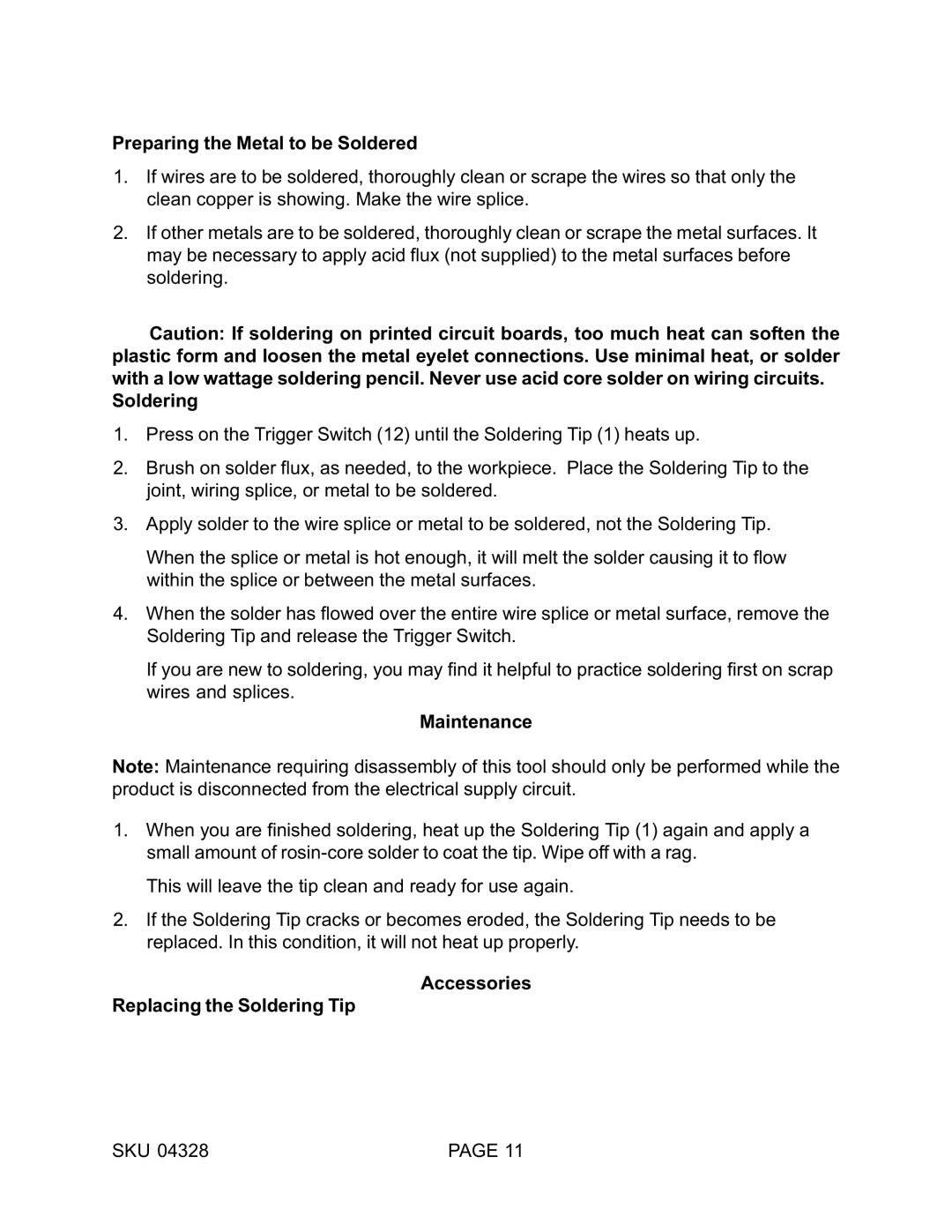Preparing the Metal to be Soldered
1.If wires are to be soldered, thoroughly clean or scrape the wires so that only the clean copper is showing. Make the wire splice.
2.If other metals are to be soldered, thoroughly clean or scrape the metal surfaces. It may be necessary to apply acid flux (not supplied) to the metal surfaces before soldering.
Caution: If soldering on printed circuit boards, too much heat can soften the plastic form and loosen the metal eyelet connections. Use minimal heat, or solder with a low wattage soldering pencil. Never use acid core solder on wiring circuits.
Soldering
1.Press on the Trigger Switch (12) until the Soldering Tip (1) heats up.
2.Brush on solder flux, as needed, to the workpiece. Place the Soldering Tip to the joint, wiring splice, or metal to be soldered.
3.Apply solder to the wire splice or metal to be soldered, not the Soldering Tip.
When the splice or metal is hot enough, it will melt the solder causing it to flow within the splice or between the metal surfaces.
4.When the solder has flowed over the entire wire splice or metal surface, remove the Soldering Tip and release the Trigger Switch.
If you are new to soldering, you may find it helpful to practice soldering first on scrap wires and splices.
Maintenance
Note: Maintenance requiring disassembly of this tool should only be performed while the product is disconnected from the electrical supply circuit.
1.When you are finished soldering, heat up the Soldering Tip (1) again and apply a small amount of
This will leave the tip clean and ready for use again.
2.If the Soldering Tip cracks or becomes eroded, the Soldering Tip needs to be replaced. In this condition, it will not heat up properly.
Accessories
Replacing the Soldering Tip
SKU 04328 | PAGE 11 |
